 |
||
Violin Research's business consists of a series of processes, from "restoration/set-up - sales - maintenance". All instruments sold are carefully and thoughtfully set-up by our technical staff. The performance of stringed instruments varies greatly depending on the state of maintenance. When both old and new instruments are well maintained, they are not only quicker and more efficient to pronounce, but also easier to use, such as easier tuning and fingering, and more sensitive to the delicate demands of the player. Maintenance work is also very important to keep the instrument in good working order. All instruments sold by our company are covered by the "Free Maintenance Programme" (periodic inspection and adjustment). We recommend that you have this free service carried out regularly to ensure that your instrument is always in good condition. |
||
 |
||||||||
<About set-up> The maintenance and set-up of a violin can vary widely. For an old instrument, this may include correcting long-term distortions, repairing and reinforcing cracks, repairing or replacing worn parts (edges, blocks, linings, bass bars, peg holes, etc.), and fundamental structural repairs such as neck grafting and neck projection correction. Functional maintenance work such as fingerboard shooting and replacement, replacement of parts such as pegs and tailpieces, new bridges and sound posts are also carried out as necessary. In all of this work, we attach great importance to respecting the original parts and standards as much as possible. As a result, each and every maintenance work is linked to the full performance of the instrument. The basis of our work is the respect for the works inherited from past eras and the pursuit of functionality and sound as a tool from the player's point of view. |
||||||||
<Daily Handling Tips>
1) Bridge: Always pay attention to the position and condition of the bridge. If a bridge is tilted or distorted towards the fingerboard when changing or tuning strings, make sure that the tailpiece side of the bridge is perpendicular to the faceplate and that the top of the bridge is straight and parallel to the end of the fingerboard. If the bridge is used in a tilted or distorted position, it will be deformed and not only will it not produce good sound, but it may also cause the bridge to fall over unexpectedly. If the position of the foot of the bridge has moved, return it to its original position.
2) Sound post: The sound post is adjusted to a position where clear and balanced pronunciation can be obtained. When the correlation between the standing position of the bridge and the position of the sound post is correct, the vibration of the strings is efficiently transmitted to the body, resulting in a quicker and resonant sound. If the sound post has fallen or moved for any reason, please bring it to us at the earliest opportunity.
3) Pegs: The pegs have been adjusted to be reasonably smooth, easy to turn and to stop securely. To ensure that they remain comfortable, care must be taken about winding the strings and about the humidity level. The string is wound by inserting the end of the string into the hole in the centre of the shaft, winding it down the narrow side of the shaft, crossing it over to the thick side and winding it up the outer wall of the pegbox in sequence. During the humid season, the wood expands and the winding becomes hard, and vice versa during the dry season. If the string is too hard, pull the peg out a little more, or if it is too soft and difficult to stop, push it out more.
4) Changing strings: Always change strings one at a time. If all strings are loosened at once, the tension previously applied to the instrument will suddenly drop, causing the bridge or sound post to move or fall over. After removing one string and putting on a new string, tune the instrument to a near-normal pitch, check and correct the condition of the bridge and then replace the next string in the same way. Please note that the strings on instruments sold by us at the time of delivery are selected and balanced as part of the tuning process. If you wish to maintain the current tone and responce, we recommend that you purchase strings of the same type and gauge. We keep the data from the time of sale, so please contact us using the registration number or your name.
5) Care and storage: After each use, wipe the strings, fingerboard and neck thoroughly clean of moisture grease and rosin stains, and wipe the body dry to keep the varnish clean. Take care to protect the instrument from sudden changes in outside temperature and humidity. The ideal humidity level for instruments is 30-70%. Use a humidity-retaining dehumidifier if necessary. Varnish and glue are very sensitive to humidity and temperature. Particular attention should be paid to high temperatures and humidity, as they can cause the varnish to soften and eventually peel off the glued surfaces and cause the neck to drop. Do not leave the instrument in the car, even for short periods of time, during the summer months. |
||||||||
 |
||||||||
<About the sale> Selecting a stringed instrument can be quite difficult. We would like to help you select the right instrument by going through the above process, providing you with an instrument in good maintenance condition and taking your time to put yourself in the customer's shoes. It is not uncommon for a customer's tastes to be vaguely. In relation to playing technique, they may not have a good understanding of the performance of the instrument. In such cases, we will try to provide you with as much information and examples as possible in consultation with you, and help you to discover all sorts of enjoyable things about the instrument. In the end, we try to work together with you to understand your preferences and what you want, so that we can make a better proposal that fits your budget. |
||||||||
 |
||||||||
<About maintenance> The condition of stringed instruments is subject to change depending on the season and usage conditions. We recommend periodic inspections and adjustments to ensure that your instrument remains in good condition at the time of sale. We offer this service free of charge for instruments purchased from us. We do not give you any specific information about the time for inspections, but please do not hesitate to ask us if you need to have your instrument serviced. If an abnormality is found due to wear or damage, repair work will be charged for, but the earlier it is detected, the less time and cost it will take to repair the instrument. The customer's name and instrument data are registered and stored, so you can leave the maintenance work to us with peace of mind. |
||||||||
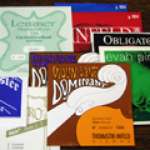 |
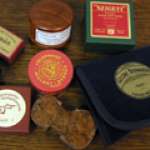 |
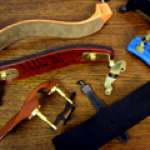 |
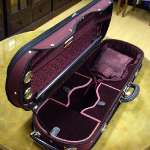 |
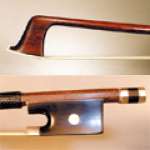 |
||||||
Accessories for sale: Strings, cases and many other accessories for stringed instruments. We also take email orders for busy customers. Please feel free to order by e-mail, fax or telephone. Prices are our own discounted prices. For orders over 5,000yen, the goods will be sent free of charge by post or courier only within Japan. |
Import/export of stringed instrument-related products: Product planning and export of cases and other products, as well as import of various stringed instrument-related accessories, cases, raw materials and production tools. |
|||
Insurance appraisals: We can assess instruments and issue appraisals for instrument insurance on request. We can also prepare such documents in English, which are valid for overseas insurance companies. We also issue damage certificates and repair estimates in the event of accidents. |
||||||
Bow rehairing and bow repair: Bow rehairing is usually available on a two-day leave condition. We have a particularly good reputation for rehairing valuable old bows, as we always have a stock of high quality horsehair in stock. Rehairing is a very delicate process. We take the utmost care and attention to detail and allow sufficient time for the work to be carried out. |
||||||
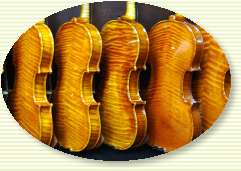 |
||||||
Consignment sales: If you want to sell your instrument or bow, we will be happy to help you. We will first carry out an appraisal and, if the price is right, we will help you find a suitable customer through a consignment sale agreement. |
||||||